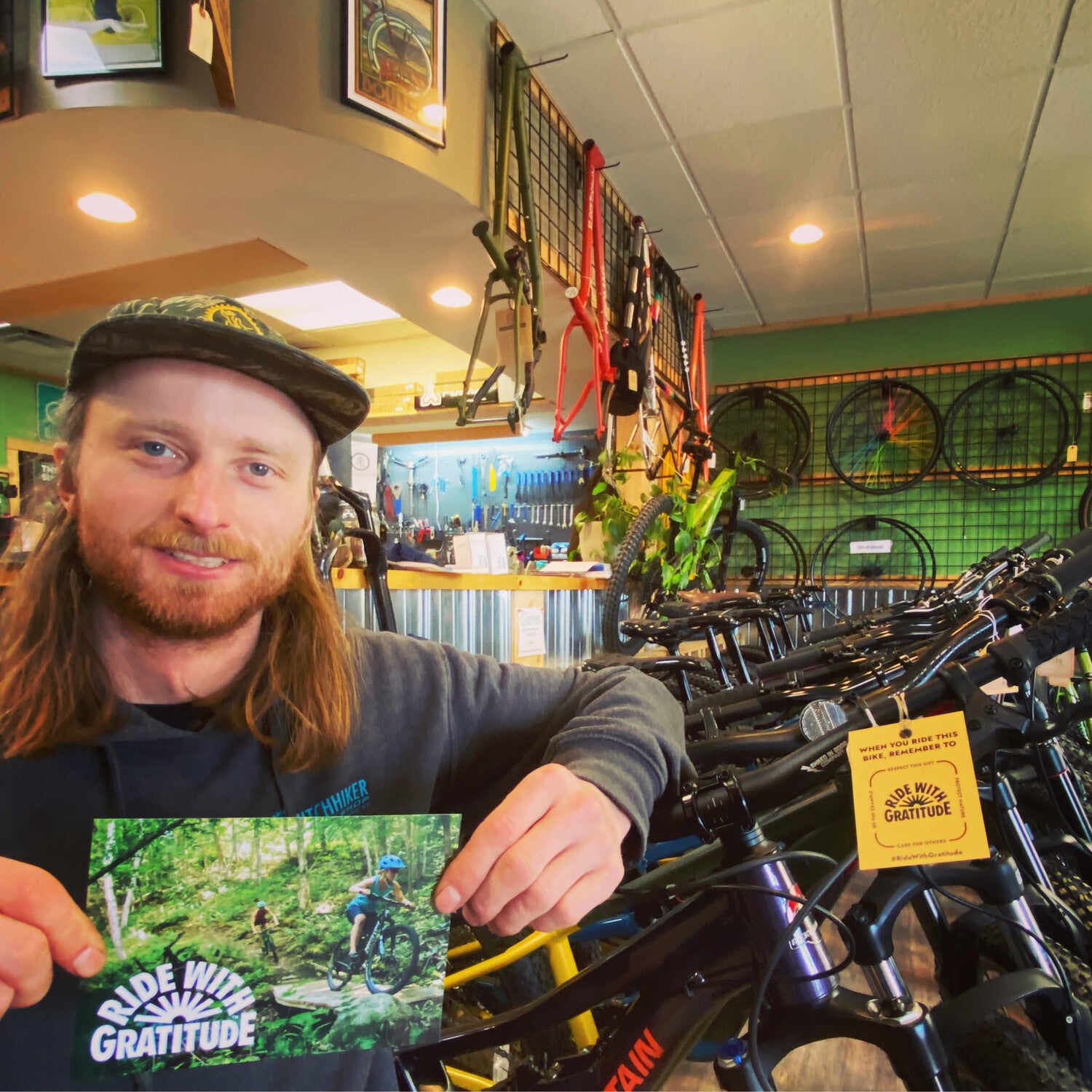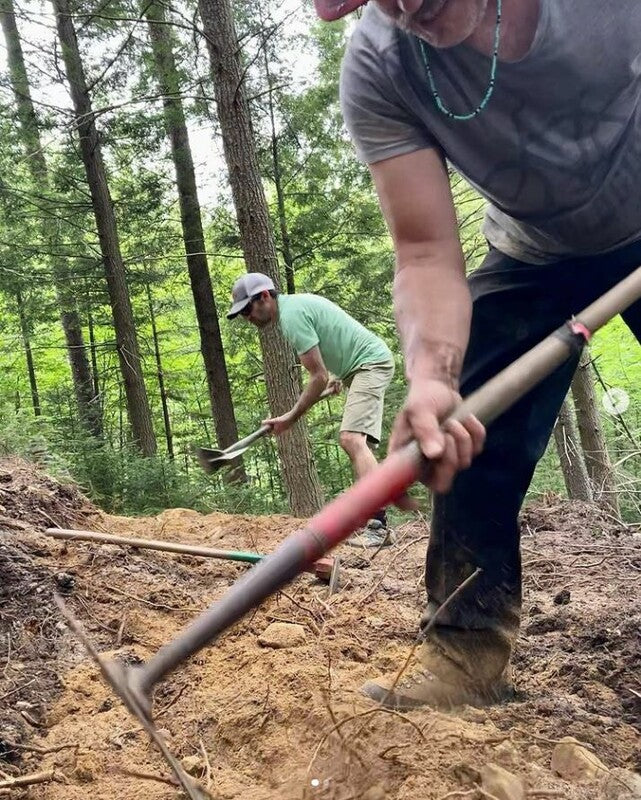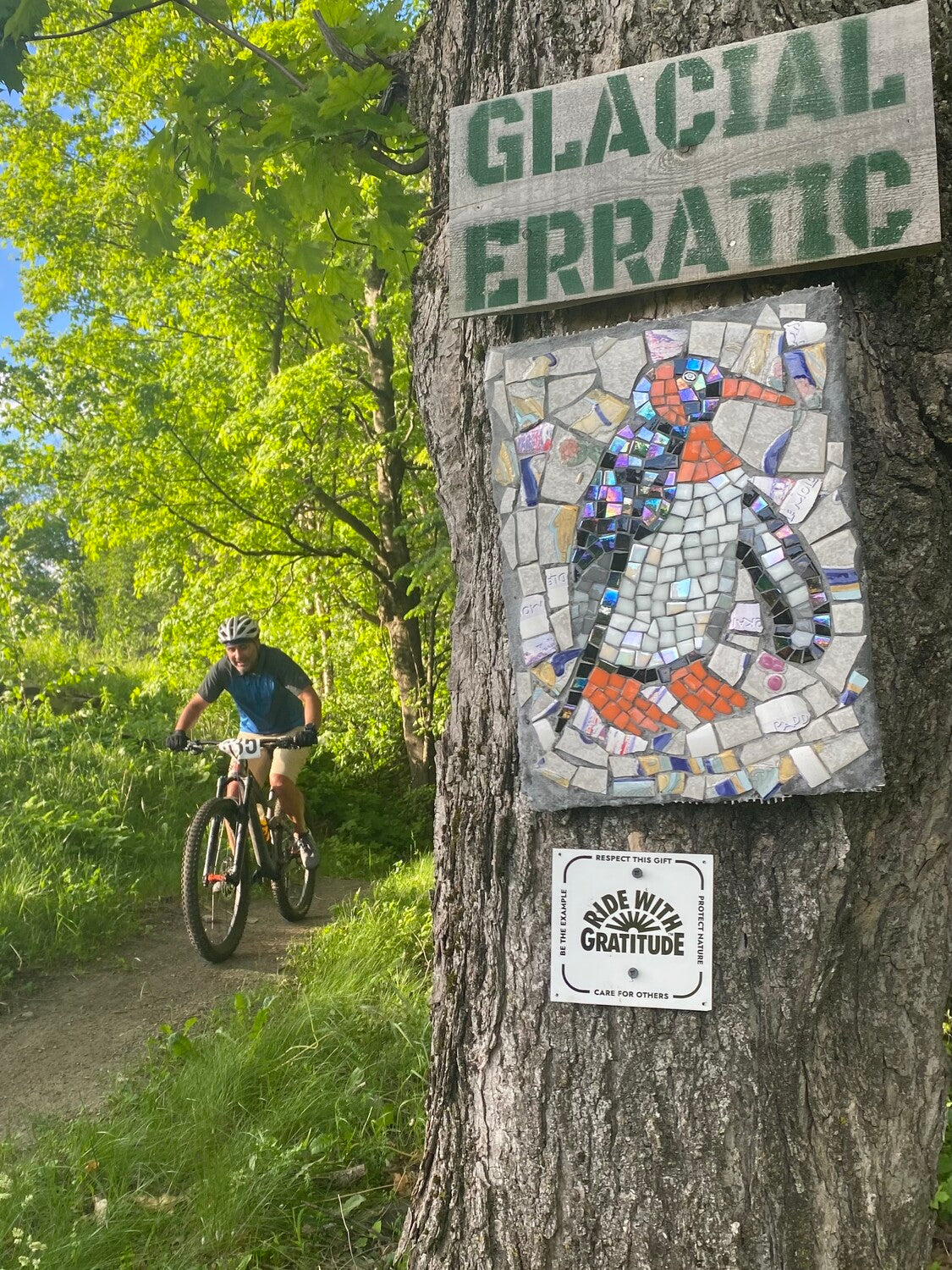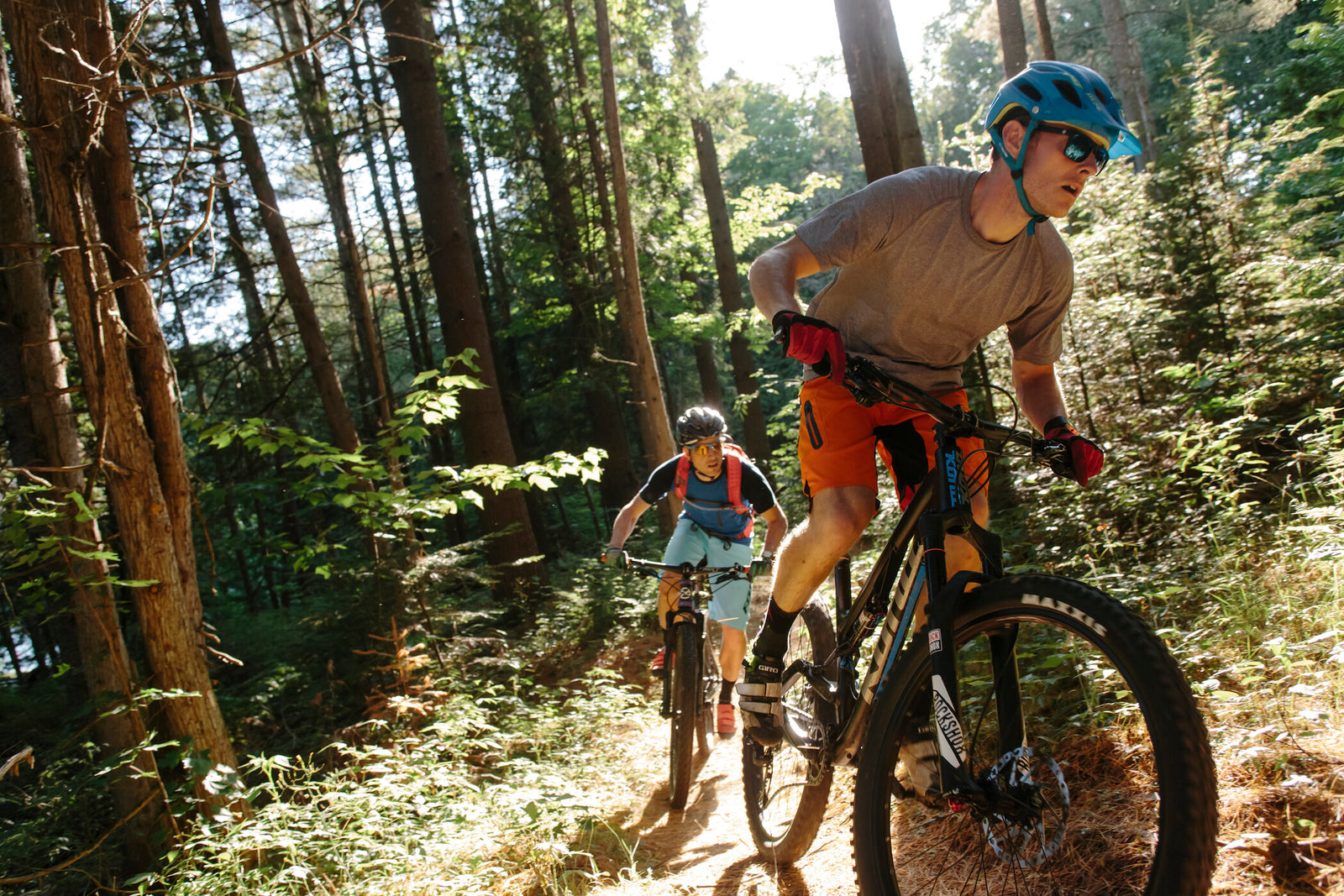November 2nd, 2024 | by Joe Fox
Our Quench'd story this week is all about improving mountain bike culture by riding with gratitude.
A lot of the riding in Vermont and New England takes place on privately owned land, with the generous permission of landowners. To help respect this dynamic, the team at the Northern Forest Center created the Ride with Gratitude movement. The team partnered with local New England mountain bike networks, to foster a shared sense of responsibility and respect for the trails we all ride.
Joe Fox, the Northern Forest Center’s outdoor recreation manager, shares his experience with the initiative and how all riders can help protect the trails we ride. Welcome to Quench'd, Joe!
Our Quench'd story this week is all about improving mountain bike culture by riding with gratitude.
A lot of the riding in Vermont and New England takes place on privately owned land, with the generous permission of landowners. To help respect this dynamic, the team at the Northern Forest Center created the Ride with Gratitude movement. The team partnered with local New England mountain bike networks, to foster a shared sense of responsibility and respect for the trails we all ride.
Joe Fox, the Northern Forest Center’s outdoor recreation manager, shares his experience with the initiative and how all riders can help protect the trails we ride. Welcome to Quench'd, Joe!
I consider myself extremely fortunate to live in Vermont’s “Northeast Kingdom,” an area surrounded by some of the best mountain bike trails in the world and featuring everything from fast and flowy buffed out trails to incredibly tech old school singletrack, and all surrounded by scenic rivers, fields, and mountains.
Chances are pretty good that if you mountain bike, here in the Northeast or elsewhere, you’re doing it on someone else’s private land that they have generously made available for public access, or on public land that folks have likely advocated for years to gain public mountain biking access on.
The Northern Forest – the area I live and work in – is a 30-million-acre region of densely forested land in the Northeast that stretches across northern Maine, New Hampshire, Vermont, and New York. More than 80% of that is private land, and vulnerable to loss if riders don’t respect other recreational users and the trails they ride on.
I consider myself extremely fortunate to live in Vermont’s “Northeast Kingdom,” an area surrounded by some of the best mountain bike trails in the world and featuring everything from fast and flowy buffed out trails to incredibly tech old school singletrack, and all surrounded by scenic rivers, fields, and mountains.
Chances are pretty good that if you mountain bike, here in the Northeast or elsewhere, you’re doing it on someone else’s private land that they have generously made available for public access, or on public land that folks have likely advocated for years to gain public mountain biking access on.
The Northern Forest – the area I live and work in – is a 30-million-acre region of densely forested land in the Northeast that stretches across northern Maine, New Hampshire, Vermont, and New York. More than 80% of that is private land, and vulnerable to loss if riders don’t respect other recreational users and the trails they ride on.
That nightmare situation, the loss of public access to trails, became reality at one of the region’s most popular riding destinations, Kingdom Trails. I live right down the road from the network and knew how devastating it was when over 300 acres of prime riding terrain in the heart of the network was closed due to a mountain biker and landowner conflict.
Realizing there was a major need to educate riders on safe and respectful etiquette, Kingdom Trails brought the issue to the Northern Forest Center’s Bike Borderlands group, launched by the Center in 2017 to promote mountain biking across three states and two counties. Our Borderlands group came together to create a simple list of principles, and then the Center leveraged its resources to elevate the messages to a full-on rider education campaign that has resonated with trail networks across the country.
The Ride With Gratitude movement calls on riders to respect the gift of mountain biking, care for others, protect nature, and hold each other accountable. Mountain bikers are encouraged to take a pledge and share how they Ride With Gratitude, and can choose to receive a sticker to help spread the mission.
Beyond the pledge, the ethos is spread through:
That nightmare situation, the loss of public access to trails, became reality at one of the region’s most popular riding destinations, Kingdom Trails. I live right down the road from the network and knew how devastating it was when over 300 acres of prime riding terrain in the heart of the network was closed due to a mountain biker and landowner conflict.
Realizing there was a major need to educate riders on safe and respectful etiquette, Kingdom Trails brought the issue to the Northern Forest Center’s Bike Borderlands group, launched by the Center in 2017 to promote mountain biking across three states and two counties. Our Borderlands group came together to create a simple list of principles, and then the Center leveraged its resources to elevate the messages to a full-on rider education campaign that has resonated with trail networks across the country.
The Ride With Gratitude movement calls on riders to respect the gift of mountain biking, care for others, protect nature, and hold each other accountable. Mountain bikers are encouraged to take a pledge and share how they Ride With Gratitude, and can choose to receive a sticker to help spread the mission.
Beyond the pledge, the ethos is spread through:








Last year we decided to conduct a survey of regional mountain bikers to gauge if people were aware of this initiative and if it has been affecting any kind of change in rider behavior.
The short answer – yes and yes, and respondents wanted us to lean in even more with rider education.
Of the more than 430 respondents, about 84% reported riding at least weekly. There was a strong perception that most mountain bikers behave well and it’s a small minority that causes problems. Still, 68% of respondents who had taken the Ride With Gratitude pledge said that the pledge has had a positive impact on riding culture, and 50% of riders who’d taken the pledge reporting that they changed their own behavior in the past 2 years. That’s a phenomenal level of engagement and impact!
The biggest piece of feedback we’ve heard is that people are looking for more specific ways on how to ride with gratitude.
Participants in our survey were asked to give examples of how they had changed their behavior since taking the pledge, and here are a few examples:
Encouraged by these examples and other submissions through the pledge form, we launched a quirky Instagram reels series with “Captain Gratitude” showing the principles in the wild.
We encourage you – wherever you ride – to be an intentional rider and help spread the word. If you’d like to learn more about what it means to Ride With Gratitude or to take the pledge, please visit www.ridewithgratitude.org
Last year we decided to conduct a survey of regional mountain bikers to gauge if people were aware of this initiative and if it has been affecting any kind of change in rider behavior.
The short answer – yes and yes, and respondents wanted us to lean in even more with rider education.
Of the more than 430 respondents, about 84% reported riding at least weekly. There was a strong perception that most mountain bikers behave well and it’s a small minority that causes problems. Still, 68% of respondents who had taken the Ride With Gratitude pledge said that the pledge has had a positive impact on riding culture, and 50% of riders who’d taken the pledge reporting that they changed their own behavior in the past 2 years. That’s a phenomenal level of engagement and impact!
The biggest piece of feedback we’ve heard is that people are looking for more specific ways on how to ride with gratitude.
Participants in our survey were asked to give examples of how they had changed their behavior since taking the pledge, and here are a few examples:
Encouraged by these examples and other submissions through the pledge form, we launched a quirky Instagram reels series with “Captain Gratitude” showing the principles in the wild.
We encourage you – wherever you ride – to be an intentional rider and help spread the word. If you’d like to learn more about what it means to Ride With Gratitude or to take the pledge, please visit www.ridewithgratitude.org


@ActivelyWandering
November 02, 2024
Ride With Gratitude is the BEST! Joe is also very good people and I personally vouch for both. Bivo, keep doing the good things you’re doing, not just for the athletic community but also the earth!